
 Data Structure
Data Structure Networking
Networking RDBMS
RDBMS Operating System
Operating System Java
Java MS Excel
MS Excel iOS
iOS HTML
HTML CSS
CSS Android
Android Python
Python C Programming
C Programming C++
C++ C#
C# MongoDB
MongoDB MySQL
MySQL Javascript
Javascript PHP
PHP
- Selected Reading
- UPSC IAS Exams Notes
- Developer's Best Practices
- Questions and Answers
- Effective Resume Writing
- HR Interview Questions
- Computer Glossary
- Who is Who
Can a Heterotroph Plant Be Carnivorous?
Problem Statement
Can a Heterotroph Plant Be Carnivorous?Solution
Introduction
Plants are typically known to be autotrophic organisms that produce their food through photosynthesis. However, there are some exceptions to this rule. Heterotrophic plants are organisms that rely on external sources of organic matter to sustain their growth and survival. This group of plants includes both parasitic and saprophytic plants.
Among heterotrophic plants, there is a unique group of organisms known as carnivorous plants. In this tutorial, we will explore the world of heterotrophic plants and their mode of nutrition, before delving into the fascinating world of carnivorous plants. We will explore the intriguing question of how heterotrophic plants can be carnivorous.
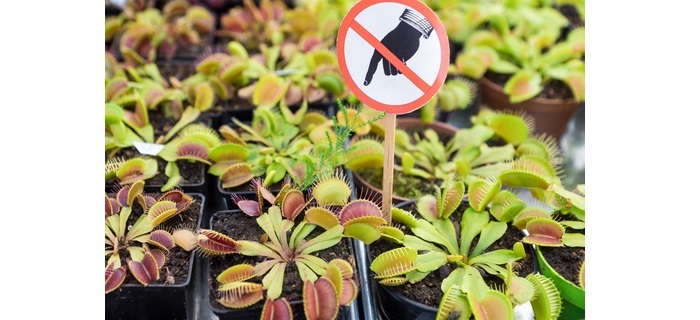
Mode of Nutrition
There are basically two main modes of nutrition. These are autotrophic and heterotrophic modes of nutrition.
Autotrophic Mode of Nutrition
It is the process by which organisms produce their own food using energy from the sun (photosynthesis) or from inorganic substances (chemosynthesis). Autotrophic organisms, such as plants, algae, and some bacteria, are able to synthesize their own organic compounds from simple inorganic substances, such as carbon dioxide and water, using energy from the sun or chemical reactions.
Heterotrophic Mode of Nutrition
It is the process by which organisms obtain their food by consuming organic matter from other sources. Heterotrophic organisms, such as animals, fungi, and some bacteria, do not have chlorophyll and hence they are unable to synthesize their own food.
In addition to autotrophic and heterotrophic modes of nutrition, there are two other modes of nutrition. These are known as mixotrophic and parasitic modes of nutrition. It's worth noting that there are many variations within each of these modes of nutrition, and some organisms may exhibit characteristics of multiple modes of nutrition depending on their environment and other factors.
Heterotrophic Plants
Heterotrophic plants are organisms that derive their nutrients from organic compounds. These plants lack chlorophyll and are unable to produce their food through photosynthesis. Instead, they rely on external sources of organic matter to sustain their growth and survival. Heterotrophic plants can be either parasitic or saprophytic. Parasitic plants obtain nutrients by attaching themselves to the host plant and drawing nutrients from them. Saprophytic plants, on the other hand, obtain nutrients by decomposing dead organic matter.
Carnivorous Plants
Carnivorous plants are a unique group of heterotrophic plants that have evolved to capture and digest prey to obtain the nutrients that they require for growth and survival. Unlike other heterotrophic plants, carnivorous plants have developed specialized structures and mechanisms to capture and digest insects and other small animals. These adaptations have allowed carnivorous plants to thrive in nutrient-poor environments such as bogs, swamps, and other wetlands.
Types of Carnivorous Plants
Carnivorous plants can be found in various habitats, including wetlands, forests, and deserts. They are categorized based on the mechanism they use to capture their prey. Here are some types of carnivorous plants ?
Pitcher Plants
These plants have deep, tubular leaves filled with a digestive fluid. The shape of the leaves makes it easy for insects to crawl inside, but difficult for them to escape. Once trapped, the insects drown in the fluid and are digested by enzymes secreted by the plant.
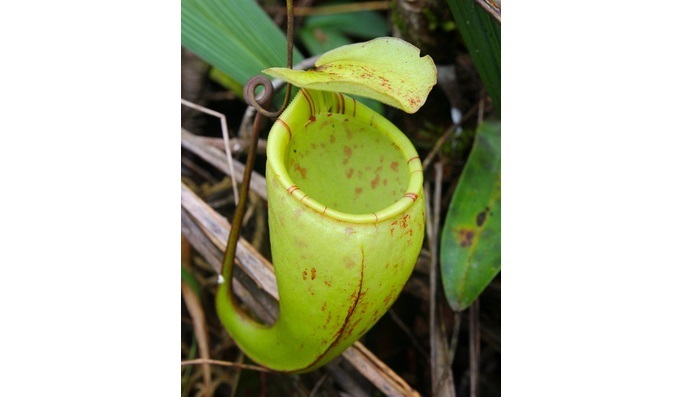
Pitcher plant
Venus Flytrap
The Venus flytrap has leaves that are modified into snap traps. When an insect touches the trigger hairs on the surface of the leaf, the trap snaps shut, trapping the insect inside. The plant then secretes digestive enzymes to break down the insect and absorb the nutrients.
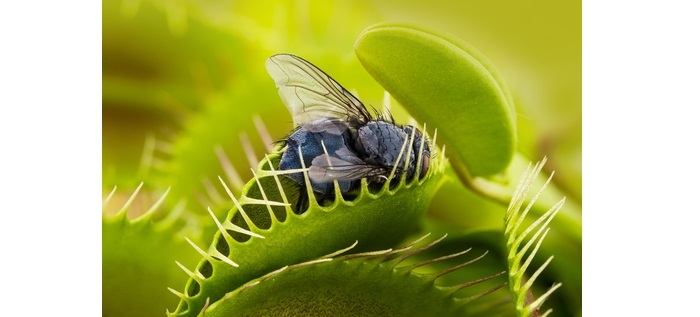
Venus Flytrap
Sundews
Sundews are carnivorous plants that have evolved modified leaves covered in sticky hairs that capture small insects. Once a prey is caught, the hairs on the leaves curl inwards, bringing the insect in contact with digestive enzymes, which break down the insect's body into nutrients. Like bladderworts, sundews also undergo photosynthesis and can obtain nutrients through their roots.
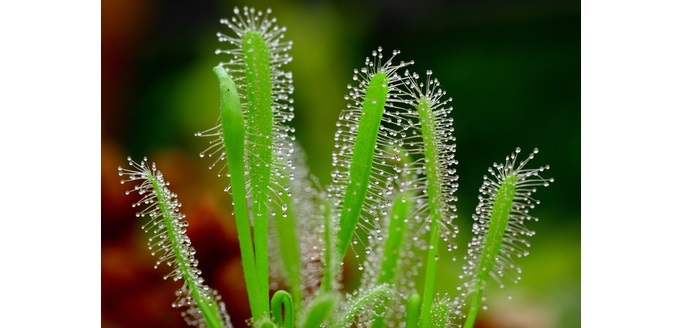
Sundew (Drosera spp.)
Bladderworts
Bladderworts are aquatic plants that have evolved modified leaves called bladders, which are used to capture small aquatic animals. The bladders are equipped with trigger hairs that, when touched by a prey, open up, creating a vacuum that sucks the prey into the bladder. Once inside the bladder, the prey is digested, and the plant absorbs the nutrients. However, bladderworts are not entirely dependent on carnivory for nutrition; they also undergo photosynthesis.
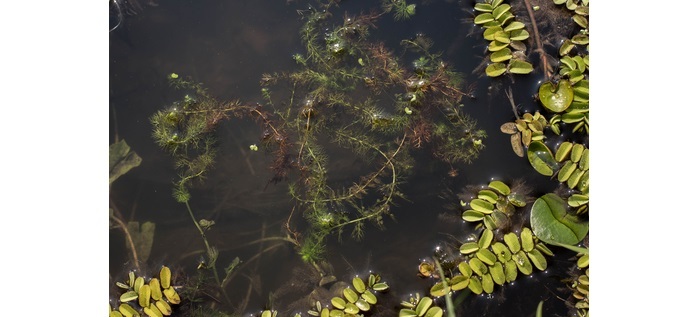
Bladderwort (Utricularia spp.)
Waterwheel Plant
This plant has a circular, water-filled trap that captures and digests small aquatic animals.
Carnivorous plants have evolved various mechanisms to capture and digest their prey, but how can heterotrophic plants be carnivorous? Heterotrophic plants lack chlorophyll and cannot produce their food through photosynthesis. They obtain nutrients by absorbing them from their environment. Carnivorous plants have evolved to capture and digest insects and other small animals, which provide them with the nutrients that they require for growth and survival.
The evolution of carnivorous plants from non-carnivorous plants is thought to be a result of the plants' adaptation to nutrient-poor environments. As the availability of nutrients decreased, some plants evolved the ability to capture and digest prey to supplement their diet. Over time, these adaptations became more specialized and efficient, resulting in the diverse array of carnivorous plants that we see today.
Conclusion
In conclusion, heterotrophic plants can be carnivorous. Carnivorous plants have evolved specialized mechanisms to capture and digest prey, which allows them to obtain the nutrients that they require for growth and survival. Heterotrophic plants, which obtain nutrients by absorbing them from their environment, can also evolve to become carnivorous if they live in nutrient-poor environments. The evolution of carnivorous plants from non-carnivorous plants is a fascinating example of the adaptability of plants and their ability to thrive in challenging environments.
FAQs
Q1. What are heterotrophic plants?
Ans. Heterotrophic plants are plants that cannot produce their own food and rely on external sources for nutrition. They obtain their nutrition from other organisms, such as fungi, in a mutualistic relationship known as mycoheterotrophy.
Q2. What are carnivorous plants?
Ans. Carnivorous plants are plants that have evolved to obtain essential nutrients by capturing and digesting small animals such as insects, spiders, and other arthropods. They have developed specialized structures, such as leaves modified into traps or digestive organs, to capture and digest small animals.
Q3. Can a plant be both heterotrophic and carnivorous?
Ans. Yes, there are plants that are both heterotrophic and carnivorous, known as mixotrophic plants. These plants can obtain nutrients through both photosynthesis and by capturing and digesting small animals.
Q4. Why do plants evolve to be carnivorous?
Ans. The evolution of carnivory in plants is thought to be a response to nutrient-poor environments, where the availability of essential nutrients is limited. By capturing and digesting small animals, carnivorous plants are able to obtain essential nutrients such as nitrogen, phosphorus, and other minerals that are not readily available in their environment.
Q5. Are there any disadvantages to being carnivorous for a plant?
Ans. Yes, there are some potential disadvantages to being carnivorous for a plant. Capturing and digesting small animals requires a significant investment of energy and resources, which may not always be available. In addition, carnivorous plants may be more vulnerable to environmental stresses such as drought, which can reduce their ability to capture and digest small animals. However, the benefits of carnivory, such as the ability to obtain essential nutrients in nutrient-poor environments, often outweigh these potential disadvantages.

